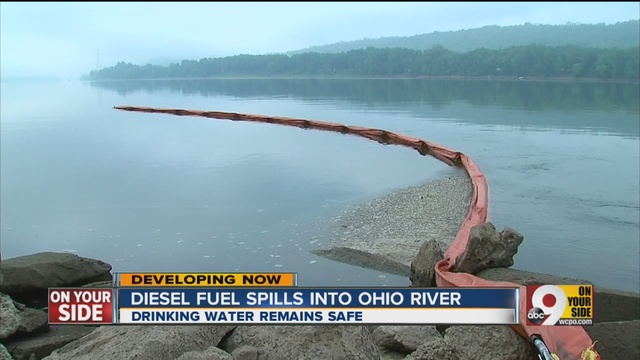
Containment of Oil Spills on Freshwater Systems
In the event of an oil spill on a freshwater body such as a river or lake, response needs to be swift in order to contain the spill and limit environmental damage. By using the appropriate equipment and methods it is possible for our teams to protect ecologically sensitive or economically important areas that lie in the path of an advancing oil slick.
Because oil is less dense than water it tends to float on the surface rather than sink — the exception being when conditions are turbulent, which can cause it to become mixed in the water column. This trait is used to good advantage when containing an oil slick on the surface of a waterway. SES is equipped to handle both spills on top of the water as well as spills that are denser than water and have sunk to the bottom of the water.
Oil Containment Booms
To contain an oil spill, floating containment booms are deployed to prevent the oil from dispersing. These effectively form a floating barrier that holds the oil in place and allows it to be recovered from the surface in-situ before it spreads further afield. Our highly skilled oil response team deploys containment booms from our Response Boat, using mooring lines and anchors to strategically place the booms so that they will effectively contain the slick and limit environmental damage.
Booms are typically placed:
- Across a narrow inlet or outlet to prevent the oil from passing through to a sensitive ecosystem or habitat such as a wetland river or lake.
- In areas where booms can be efficient at deflecting oil away from ecologically sensitive or economically important areas such as bird nesting sites, aquaculture projects or tourist resorts.
- Around an ecologically sensitive area to prevent it from being polluted by the oil slick.
Types of Oil Containment Booms
There are various types of oil containment booms available, and the choice of equipment will depend on the conditions at the site where they are being deployed. The three key types of booms used to contain oil include:
- Hard Booms — these consist of cylindrical plastic floats that serve as a flotation device, together with a freeboard to prevent oil from being washed over the top of the boom, a skirt that hangs down into the water to prevent oil from passing underneath the boom. The boom is supported by a longitudinal strength member, weighed down by ballast and held in place by a connector (connecting to another boom) or anchoring point attached to an anchor.
- Sorbent Booms — while these booms lack the skirt characteristic of hard booms, and are therefore not able to contain oil for extended periods, they are constructed from absorbent material that soaks up the oil from the water’s surface, making them effective for oil recovery in certain conditions.
- Fire Booms — these booms are constructed from metal to withstand heat, and consist of metal floatation device together with metal plates that hang down into the water to serve as the skirt. They are designed to contain oil for short periods to facilitate removal by igniting and burning it rather than recovering it from the surface.
- Shoreline Booms — these booms are specifically designed for use in shallow water and are deployed along shorelines to protect the soil on lake shores or the banks of rivers. They are often used near the oil collection areas — typically in conjunction with other containment and recovery equipment — to minimize the impact to the shoreline during recovery efforts.
Oil Skimmers
Oil skimmers are specially designed boats or oil skimming devices that are able to remove oil from the surface of the water to prevent it from reaching sensitive areas. In some cases two boats are used to tow and position an oil containment boom, which holds the oil in place to facilitate recovery by the skimmer.
Oil Dispersants
Chemical oil dispersants that allow oil to disperse oil throughout the water column can also be applied by boat-based recovery crews to prevent oil slicks from polluting sensitive areas such as lake shores. Dispersal causes oil to sink to the bottom of lakes where it is broken down by natural processes.
Oil Response
Our knowledgeable and highly skilled oil response team can offer site-specific advice on the most effective method to use based on the specific conditions for each spill encountered, so give us a call at 513-874-8355 or email us at hazmat@sesinc.cc


Leave a Reply